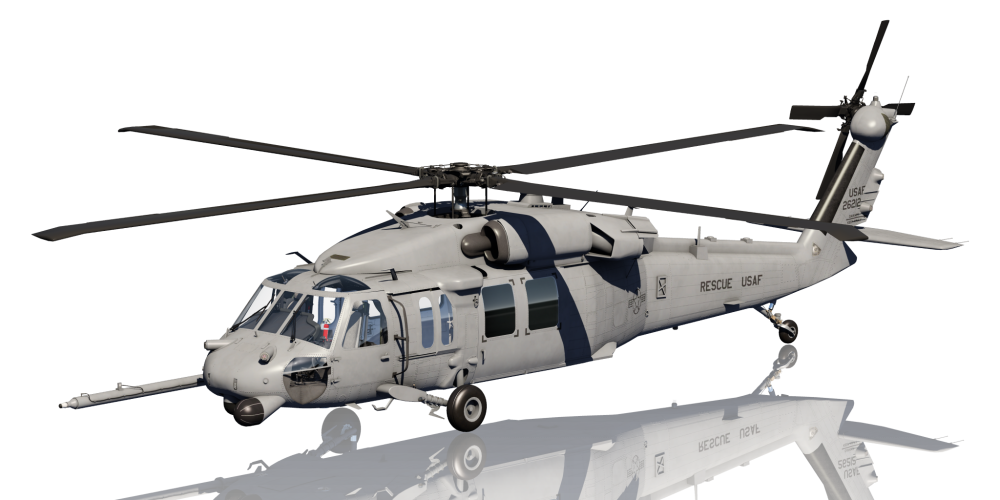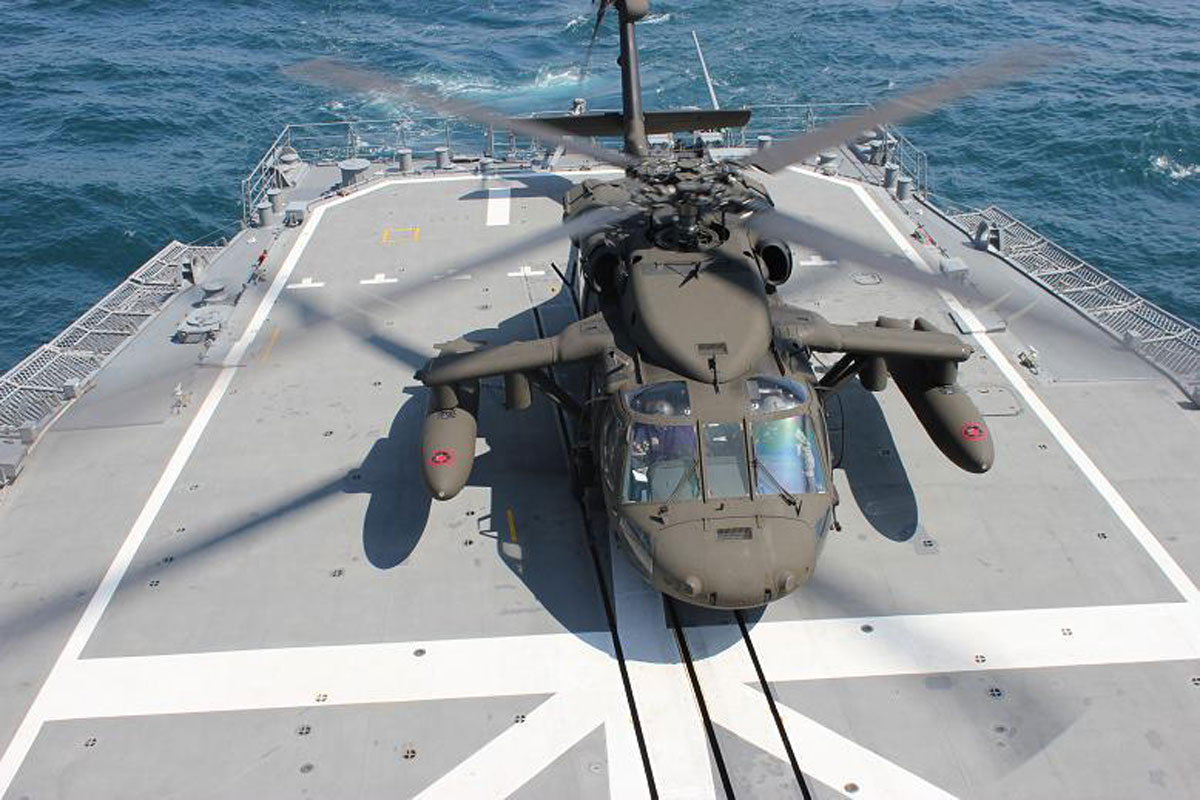Crucial Facts and Insights Regarding the UH-60 Helicopter
The UH-60 helicopter, a foundation of modern-day army aeronautics, has progressed significantly considering that its intro in 1979. Distinguished for its adaptability, it includes a sophisticated style that suits various operational demands, from army transport to clinical discharge. Its advanced avionics and durable building and construction enhance both performance and security in diverse environments. The ramifications of its layout selections and functional capacities expand beyond the battleground, influencing humanitarian objectives worldwide. Comprehending the details of the UH-60's function exposes an intricate story of technology and adjustment that values better expedition.
History of the UH-60
The UH-60 Black Hawk helicopter was created in the late 1970s as component of the United States Army's campaign to replace the older UH-1 Iroquois. The demand for an extra versatile, long lasting, and qualified airplane arose from the lessons discovered during the Vietnam War, where the limitations of the UH-1 came to be evident. In 1972, the Army started a program to obtain a new energy helicopter, finishing in a competitive layout stage that saw a number of makers send proposals.
Sikorsky Airplane was inevitably granted the agreement in 1976, and the first model of the Black Hawk took flight in 1974. Its design focused on innovative innovation, including a four-blade rotor system and a modular building that permitted fast area maintenance and adaptability to different missions. Formally going into solution in 1979, the UH-60 rapidly came to be the backbone of Army aviation, offering in a wide variety of duties such as troop transportation, medevac, and logistical assistance.
Throughout the years, the Black Hawk has gone through numerous upgrades and adjustments, strengthening its standing as an essential possession in army operations around the globe (UH 60). Its durable performance proceeds to meet the progressing needs of contemporary warfare
Layout and Attributes
Incorporating sophisticated design concepts, the UH-60 Black Hawk includes a streamlined, wind resistant layout that enhances its performance and performance. This twin-engine utility helicopter is characterized by its distinct shape, with a high-mounted, four-blade primary rotor system that gives phenomenal lift and stability. The rotor blades are created from composite products, adding to their toughness and lowering upkeep requirements.
The body is designed for optimal weight distribution and architectural stability, enabling for an optimum gross weight of around 22,000 pounds. The cabin layout facilitates flexible configurations, suiting numerous goals, from troop transportation to medevac procedures. Furthermore, the cockpit is equipped with sophisticated avionics, including digital display screens and multi-functional systems that boost situational awareness.
The UH-60 also incorporates composite products in its airframe, which minimize radar cross-section and enhance survivability in hostile atmospheres. Its retractable landing equipment enhances the aircraft's account, additional adding to its aerodynamic efficiency. Overall, the thoughtful assimilation of style aspects and materials not only boosts the Black Hawk's functional capabilities but likewise makes sure that it stays a vital property for objectives across diverse surfaces and problems.
Operational Capacities


The UH-60 is geared up with advanced avionics and navigation systems, facilitating procedures in tough weather condition conditions and reduced presence situations. Its robust layout allows it to carry out in high-altitude and extreme temperature level conditions, further expanding its operational variety. The helicopter's twin-engine arrangement offers redundancy and enhanced efficiency, making sure dependability during important objectives.
Geared up with innovative interaction systems, the Black Hawk enhances situational recognition and control amongst armed forces units. Additionally, its ability to perform aerial reconnaissance and support close air support goals highlights its essential role on the combat zone. Generally, the UH-60 Black Hawk's operational abilities are a testimony to its importance in modern armed forces aviation, successfully fulfilling the demands of a rapidly advancing functional landscape.

Variations and Modifications
Various variants and modifications of the UH-60 Black Hawk have actually been created to meet certain objective requirements and enhance its functional convenience. One of the most notable variant is the UH-60L, which presented updated engines, enhanced avionics, and enhanced freight ability. Additionally, the UH-60M variant attributes progressed electronic avionics, a much more powerful engine, and improved survivability systems, making it ideal for a broader variety of missions.
The HH-60G Lead Hawk is one more specialized variation, designed for search and rescue procedures. It is furnished with advanced navigating systems, exterior fuel containers, and clinical evacuation capacities. The MH-60R Seahawk is maximized for anti-submarine war and maritime procedures, flaunting innovative radar and finder systems.
In addition, the armed versions, such as the AH-60, are customized for straight assault roles, featuring tool systems like rockets and machine weapons. The UH-60's flexibility is additional showcased in this post its capability to be fitted with mission-specific tools, consisting of cargo hooks for transport, army transport insides, and reconnaissance sensors.
These variations and modifications highlight the Black Hawk's important duty in modern army operations, showcasing its ability to adjust to progressing goal demands.
Function in Good Samaritan Initiatives
The UH-60 Black Hawk has stepped up to play a crucial function in humanitarian initiatives around the globe, demonstrating its versatility beyond armed forces applications. This multi-mission helicopter is outfitted to perform a range of objectives, consisting of clinical emptyings, catastrophe relief, and logistical assistance in challenging environments.
During all-natural calamities, such as earthquakes and cyclones, the Black Hawk has actually confirmed important for delivering alleviation materials and personnel to affected areas. Its capacity to run in ascetic conditions enables it to get to remote places that might be inaccessible by ground transportation, guaranteeing timely help to those in demand.
Additionally, the UH-60 is typically used for clinical emptying objectives, swiftly moving injured individuals to medical centers. Its sophisticated clinical capacities, including area for clinical employees and tools, make it possible for life-saving treatments throughout essential situations.
In international operations, the Black Hawk regularly teams up with altruistic organizations, showcasing its adaptability and integrity. By leveraging its capacities, the UH-60 not only supports military objectives yet additionally plays an essential role in relieving and conserving lives suffering throughout humanitarian crises worldwide.
Verdict
The UH-60 helicopter has actually established itself as a crucial asset in military procedures because its introduction, identified by its robust style and versatile capacities. Its different configurations satisfy a large range of goals, from troop transport to clinical evacuation. Furthermore, the UH-60's payments prolong beyond fight, playing a considerable role in altruistic efforts worldwide. The recurring development of this aircraft highlights its importance in contemporary aviation and its versatility to meet varied operational needs.
The UH-60 Black Hawk helicopter was developed in the late 1970s as part of the United States Army's effort to change the older UH-1 Iroquois.Incorporating sophisticated design principles, the UH-60 Black Hawk features a smooth, wind resistant layout that enhances its efficiency and performance.Optimized style and advanced engineering permit the UH-60 Black Hawk to succeed in a variety of operational functions. In general, the UH-60 great site Black Hawk's functional capacities are a testimony to its significance in modern military air travel, efficiently fulfilling the needs of a swiftly evolving operational landscape.
Various variants and adjustments of the UH-60 Black Hawk have been developed to meet specific mission requirements and enhance its operational adaptability.